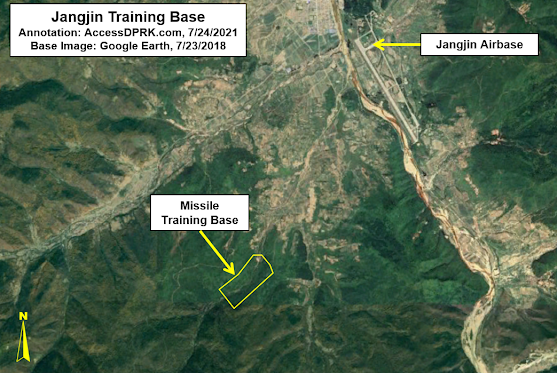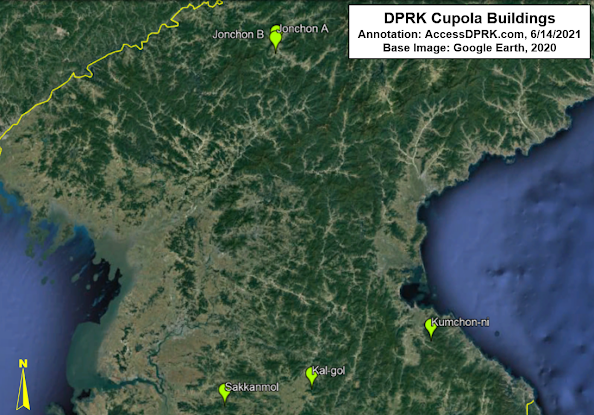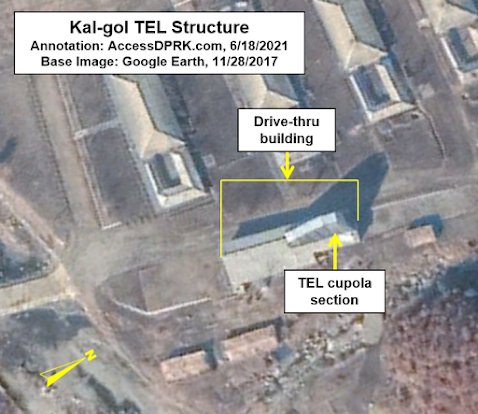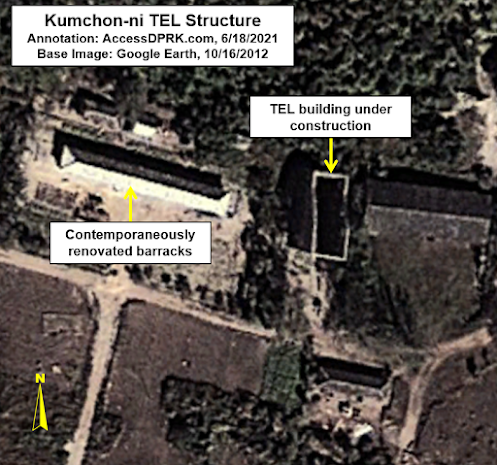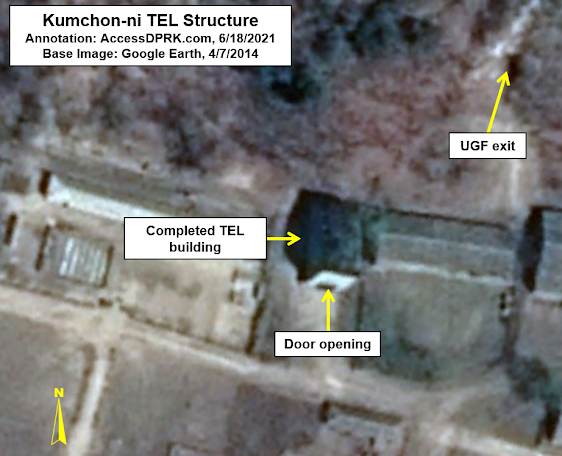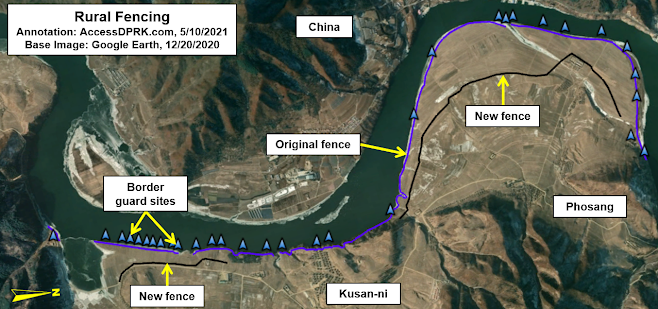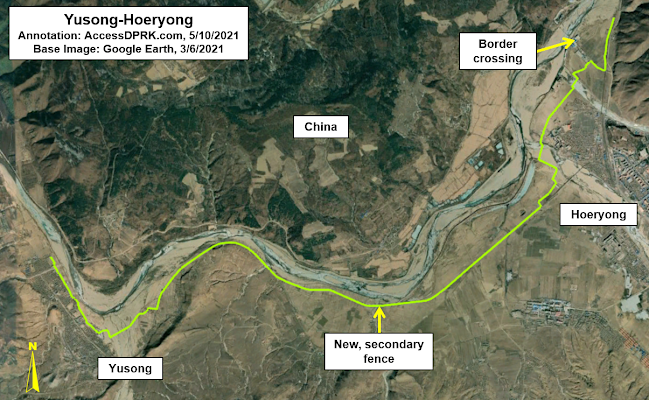Early Years
The Day of the Shining Star is a holiday commemorating the birth
of Kim Jong-il, the father of Kim Jong-un. On February 16, 1942, Kim Jong-il,
it is said, was born on the sacred volcano Mt. Paektu, the spiritual home of
all Korean people. This “Paektu bloodline” endows the Kim family with the
divine right to rule not just North Korea, but all of Korea.
The truth to Kim Jong-il’s birth is less poetic. He was born a
year earlier in 1941, in Russia. But facts rarely get in the way of North
Korean hagiographers as they work to turn ordinary stories of their leaders
into mythical epics that seek to transform their leaders into demigods and
inspire a kind of religious devotion to them.
While there are tales of new stars appearing in the sky to mark
the birth of Kim Jong-il, Kim Jong-un’s importance to the state wasn’t evident
until much later in his life, and so his tale has yet to be fully embellished.
Lacking shinning stars and double rainbows, the exact circumstances surrounding Kim
Jong-un’s birth are unknown, both to the people of North Korea and to the
outside world.
Very little biographical information about the Kim family is
released to the public and even less information is shared about those Kims
who are not currently the leader of the country. Kim Jong-un’s existence wasn’t widely known about until a few years before his father’s death in 2011.
We know that he is the fourth child of Kim Jong-il and was born to
his mistress Ko Yong-hui in either 1982 or 1983 and that he was probably born
on January 8 (his birthdate has not been confirmed by DPRK sources). We know that from 1993 to 2001 he attended both private and public schools in
Switzerland under an assumed name, Pak-un, as part of a carefully constructed fake identity. Although, more recent evidence
suggests that he began going to school in 1991.
However, apart from random anecdotes, the memories of his European
classmates and from the few defectors who knew him, and what can be gleaned
from other sources, relatively little can be known for certain about his life
and activities until 2010.
Although Kim Jong-un grew up in the rarified atmosphere of North
Korea’s most elite family, among palaces and armored trains, as Kim Jong-il’s
third son, he appeared to be destined to live a luxurious but quiet life.
Perhaps he would become the head of a political department and sit on various
government commissions, but he was never intended to become a public figure,
let alone the leader of North Korea.
Spending his youth in the country between the Kim family’s main
palace, Ryongsong,
and at their seaside compound in Wonsan, the young Kim Jong-un would have
enjoyed the rare foods his father procured
from abroad, boats and Ski-dos, horse riding, his own “General’s” uniform,
models of weapons, and lots of foreign films and video games that were prohibited to the rest of the population.
Often alone with his nurse and bodyguards, the young prince could order them
about at his whim – and no one dared disobey.
While he did spend time under the care of his aunt, Ko Yong-suk, and with her young son, his childhood was far from normal, and he did not have
the kind of tight-knit nuclear family that so many enjoy.
Despite the limited information available, some things all sources agree on: Kim Jong-un loves basketball, particularly the American NBA team the Chicago Bulls, and he also had access to the best electronic gadgets the 1990s had to offer.
Time in Switzerland
It wasn’t until he was sent to Switzerland (as had also been done
with his siblings) that he seems to have developed some level of friendship
with his foreign classmates, while true friendships in North Korea were all but
impossible given the power dynamics between the deified princeling and his
subjects (no matter how much older, respected, or accomplished they were).
During his time in Switzerland from ca. 1993 to 2001, one of the
schools he attended was the International School of Berne, which cost $20,000
a year in tuition. Like other children at these schools, Kim (rather,
Pak Un) was assumed to come from a wealthy but not necessarily important
family, and no one realized that he was the child of one of the most notorious
leaders in the world until he himself became leader.
His lack of German-language speaking skills and his ridged,
constructed life outside of school meant that Kim spoke little about his life
to others. Regardless, through his enjoyment of basketball, he was able to
build relationships with his classmates and live more “normally” than he could
when cloistered inside his Swiss apartments or back in Pyongyang.
Kim’s love of basketball and of former NBA player Dennis Rodman
would later come to serve as an opening move in one of the grandest games of
all: trying to establish North Korea and its leader as a serious global player
in geopolitics.
Through these interactions over several years in Switzerland,
anecdotes reveal that otherwise hidden elements of his personality became
uncovered. Though he tended to be shy, a collection of interviews with known
classmates showed him to also be “dangerous, unpredictable, prone to violence and
with delusions of grandeur," according to
former U.S. Secretary of State for East Asian and Pacific Affairs Kurt
Campbell. His more brash side was also visible when playing sports as he could
become very competitive and had a reputation for trash talking.
Kim’s life wasn’t all sports and movie watching, however. After
two years at school (ca. 1994/95), his mother was diagnosed with advanced
breast cancer. While she immediately began receiving treatment in France, her
prognosis was grave and this affected the young boy. Despite the initial
outlook, Ko Yong-hui managed to beat the odds (of a 5-year survival rate of
22%) and lived several more years, dying in 2004 after a recurrence of cancer.
Kim’s days in Switzerland were likely numbered after his aunt (the
sister of his mother) and her husband viewed their position in the regime as weakened
by Ko Yong-hui’s illness. His aunt, Ko Yong-suk, who had been Kim Jong-un’s
guardian in Bern, gathered up her family and absconded to the U.S. Embassy in
1998. Her family now resides in New York City.
In the summer of 1998, after the defection, Kim was removed from
the private school and sent to a public school so he wouldn’t have to explain
why his guardians, who had been passed off as his “parents”, were no longer
around according to
Anna Fifield.
His inability to clearly communicate with his classmates at yet another school frustrated him and that fed into some of his worst
behaviors. Though at least one former classmate holds more moderate memories of
Kim’s actions, others recalled that he would become aggressive and even spat on
and kicked them.
A lackluster student, Kim did manage to graduate from each grade
until he was permanently brought back home in 2001.
– Regarding his youthful obsession, I would like to note that his
incongruous enjoyment of basketball, a game created by the “Yankee
imperialists” who invaded his country, and his desire to become a professional
player, is somewhat par for the course for the Kim family, whose members seem
to harbor dreams other than dictatorship and self-images that are outside of
reality.
Kim Il-sung envisioned himself a great military leader and
intellectual. The fact is, he never led more than a few hundred fighters during
the struggle against Japanese occupation. During the Korean War, he had
practically lost the whole country until China took the leading role in pushing
back NATO forces. And, he only received around eight years’ worth of
formal education (much of it in Chinese) and needed help regaining mastery of
the Korean language once he returned to the country after Japan’s surrender
after not permanently living in Korea since the 1920s.
And his father, Kim Jong-il, initially wanted to become a film
director, not a dictator. His penchant for films led him to create a massive
secret hoard of foreign movies. In 1978 it also lead to a bizarre episode of kidnapping
that one would assume was the plot of a low-budget dramedy if it weren’t real.
No matter their secret dreams, each generation of Kim has managed
to take up the mantel of power with ruthless efficiency. –
Siblings
In the meantime, Kim’s older siblings were being prepared for
their own destinies. In cases of hereditary succession around the world, it’s
usually the firstborn son who gets tapped to become the next leader. This is no
different in North Korea, unless something gets in the way.
Kim Jong-nam was Kim Jong-il’s firstborn. He was born in 1971 to
Song Hye-rim, another one of Kim Jong-il’s mistresses. His earliest years were
spent living with his aunt, Seong Hye-rang, as Kim Jong-il didn’t want the
non-divine and non-traditional circumstances of his private life incidentally
revealed to the public (or to Kim Il-sung in particular). Kim Jong-nam was
allowed to visit his grandmother in Moscow but was otherwise kept within the
walls of various villas around North Korea.
It was around the time of Song Hye-rim’s own son’s defection in
1982 that Kim Jong-nam was sent to schools in Switzerland and Russia. He
remained there until 1988 when he was recalled home. Much of the time from 1988 to 1998 is
unknown, but it is suspected that he made several foreign trips as early as
1995; a habit that would come to haunt the rest of his life.
In 1998 he was given an appointment within the Ministry of Public
Security (now called the Ministry of Social Security). He was later given roles
in the country’s developing Information Technology sector, through which he was
introduced to various foreign contacts.
It is suspected that Kim Jong-nam became the heir apparent in the
1998-2001 timeframe, but his aunt
refutes this and claims that Kim Jong-un was actually tapped to become the
successor in 1998 when he was around 15. Regardless, what happened next would
make it impossible for Kim Jong-nam to become the third Kim ruler.
In 2001, using a fake Dominican Republic passport and under the alias of
Pang Xiong (which means “fat bear” in Chinese), Kim Jong-nam and his family
attempted to enter Japan to visit Tokyo Disneyland. From there, he was arrested
and sent back to China, where Kim Jong-il demanded his return home.
The embarrassment caused by the Disneyland incident was the public
excuse for why Kim Jong-nam began to fall out of favor, but he claims
that during his life in North Korea, he advocated for various reforms and
that’s the real reason why he was passed over. From that point on, he would
spend much of his life overseas, particularly in Macau and Hong Kong, rarely
going back to Pyongyang.
Kim Jong-un’s second older brother is Kim Jong-chul, who was born
on September 25, 1981. He and Kim Jong-un share the same mother. In
contrast to Kim Jong-nam’s often public life, the life of Kim Jong-chul is virtually
unknown.
It is known that he spent his life in Pyongyang until 1993 when he
was sent to schools in Switzerland, as was tradition. He was brought back home in
1998 and according
to North Korean Leadership Watch, attended Kim Il Sung
Military University.
The Heir
With his older brothers knocked out of contention, it fell to Kim
Jong-un to become the heir apparent. Fujimoto had words to say about this as
well, saying, “if
power is to be handed over then Jong-un is the best for it.” He went on to
say that Kim Jong-il had preferred the younger Kim for years, something that
supports his aunt’s claim that Kim Jong-un had actually been decided upon as a
teenager.
Kim’s explicit existence was unknown to the people of North Korea
until 2009. Prior to that, he may have been referred to through metaphor, but
his name and relationship to the country’s Dear General were not yet known,
even among most westerners.
In contrast to Kim Jong-il’s life prior to the death of Kim
Il-sung, where he toured the country extensively with his father, it seems that
Kim Jong-il was content leaving Kim Jong-un in the background until needed. The
necessity to bring him forward and begin rigorous grooming happened much sooner
than expected.
In August 2008 Kim Jong-il suffered a serious stroke. His
situation was so severe that North Korean doctors were no longer viewed as
capable of taking care of his needs and a French doctor, Dr. Francois-Xavier
Roux, was flown to
the country to attend to him. Other reports claim that Chinese doctors were
also summoned to his side.
He was out of the public eye for around three months and when he
finally reappeared, he looked much diminished. Already a short man and someone
who didn’t like speaking in public, Kim Jong-il reemerged frail and continued
his tradition of not speaking on national television or radio, leaving the
public with many questions.
What Kim Jong-un and other members of the family were doing at
this time one can only speculate on, but this brush with death forced Kim
Jong-un into an intense period of preparation.
Even if Kim had been chosen to be the next leader as young as 15, there is little indication that he received any substantial training for the job until after 2008. And if the decision indeed wasn’t made until Kim Jong-il had his stroke, then the younger Kim was the subject of what could only be described a crash course in the dynastic leadership of an authoritarian, isolated, nuclear-armed state.
While his father had 20 years or so to gradually take on greater and greater responsibilities (to the point that, in most things, he was already the de facto leader of the county before Kim Il-sung’s death), it seemed obvious that Kim Jong-un had an uncertain number of years to prepare, to develop a power base of his own, and to learn how to manage a highly corrupt bureaucracy that was fragmented among competing power centers such as the Party, the military, and even among individuals like his uncle Jang Song-taek who had managed to carve out a level of control for themselves.
Kim Jong-un attended Kim
Il-sung Military University from 2002 to 2006, as have many other members of
the family. While military conscription is mandatory for all North Korean males
and can apply to many women as well, Kim has no basic military training.
According to official sources, he graduated at the top of his class (in contrast to his performance in Switzerland), but this
is viewed as an attempt to burnish his image as a worthy successor capable of
guiding the country.
North Korea is still deeply influenced by Confucian philosophy, where
age is strongly intertwined with the concept of wisdom. Kim’s young age could
have posed an obstacle among others in the family and military leadership who
were older and more experienced. If Kim did attend the university and
maintained a full course load, it may have prepared him in theory, but he still
lacked hard experience.
As Kim Jong-il placed the military at the forefront of North
Korean society through his Songun policy, Kim Jong-un needed to do more
than read up on the exploits of his grandfather during the 1930s and Korean
War.
Kim Jong-il began taking him to various military installations
around the country as part of “on the spot guidance” (a tool developed by Kim Il-sung
to publicly demonstrate his leadership ability and his “unmatched brilliance”),
giving the younger Kim a greater understanding of the capabilities and
deficiencies of the military he would soon inherit.
He was also seen accompanying his father on tours to factories,
cultural sites, and farms in an attempt to get him seen by the public (who had
largely been ignorant of his existence) and to try to improve his knowledge of
the way the country functions and how to behave as a Supreme Leader.
Based on a review of Korean Central News Agency reports, some
examples of these tours include a joint visit to Korean People’s Army (KPA)
Unit 851 to oversee a military drill on Oct. 4, 2010, a visit to the
construction site of the Huichon Hydroelectric Power Station on Nov. 2, 2010,
attending the New Year concert of the Unhasu Orchestra on Dec. 31, 2010, a
joint visit to the Amnokgang Gauge and Instrument General Factory on Jan. 13,
2011, viewed the performance of the Chagang Provincial Art Troupe on April 5,
2011, a joint meeting with the delegation of the Foreign Intelligence Service
of the Russian Federation on May 17, 2011, and a joint inspection of KPA
Unit 963 on July 12, 2011.
These and many other events played an important role in getting
people used to Kim Jong-un as the future leader and served as an introductory
education for him on a wide range of military, economic, agricultural, and
cultural fields.
Leading up to the time of his father’s death, Kim Jong-un was
given several official positions within the government and military. He is
believed to have served within the army’s General Political Bureau, he was
given a position on
the National Defense Commission in 2009, and on Sept. 27, 2010 he was given the
rank of Daejang (the equivalent of a four-star general in the U.S.) as
well as given the honorific “Brilliant
Comrade” which placed him above everyone but his father in the parlance
of North Korean politics.
In 2011, South Korean reporting
claimed that the regime had also begun to purge around 200 political and
military officials who were seen to be too close to his uncle Jang Sung-taek
and to others who might pose a challenge to Kim’s future rule. Some were
allegedly executed, some were demoted, while at least one individual is said
to have committed suicide after being interrogated.
Kim Jong-il’s last week alive was a rather busy one. He toured
multiple military and industrial sites giving on the spot guidance and
preparing for various economic campaigns to begin in 2012 which would be the
100th anniversary of Kim Il-sung’s birth. But he was not to see the
New Year. Kim Jong-il’s last public appearance was on December 15 when he and
Kim Jong-un visited the Kwangbok Supermarket
which had recently been renovated.
Long-term survival rates for those having suffered a major stroke
are poor, with 70-80%
dying within five years. Three years after Kim Jong-il’s stroke, he
died on Dec. 17, 2011.
On that winter’s night, the 28-year-old Kim Jong-un would be faced
with the realities of holding together a country with a chronically ill economy
while also engaging in untold palace intrigue to ensure his ability to rule all
without having the benefit of decades of preparation.
~ ~ ~ ~
Supporters at other levels will be sent each new article a day before it’s published and will also receive a mention as seen below.



